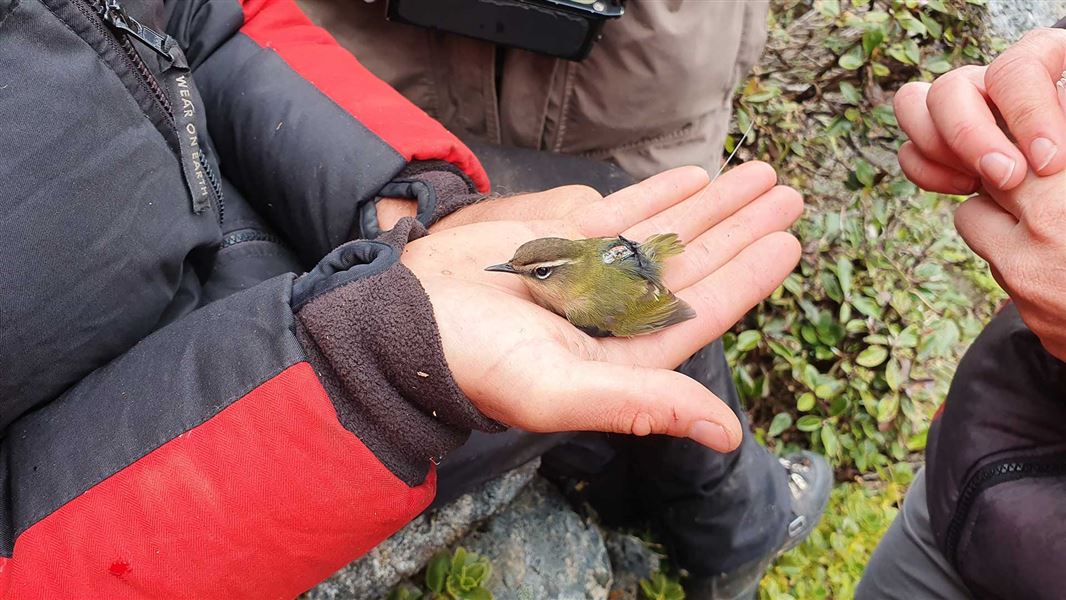Archived content: This media release was accurate on the date of publication.
Date: 22 May 2020
DOC researchers tracked 13 rock wrens, for the first time using tiny radio transmitters, through an aerial 1080 operation in the Oparara-Grange area of Kahurangi last year and all survived the operation.
The research aimed to answer questions remaining after previous monitoring in 2014 was disrupted by heavy spring snowfall and 22 rock wrens/tuke were unable to be found, says DOC Principal Science Advisor Graeme Elliott.
“We know rock wrens abandon nests and sometimes die in snowstorms, but we wanted to test whether 1080 posed a risk to these birds.
“We tracked the rock wrens for nearly three weeks after the predator control operation and none were killed by 1080.
“We are now confident that our use of 1080 to control predators such as rats and stoats will strongly benefit our threatened rock wren populations,” says Graeme Elliott.
The radio tags were carefully attached to the birds just prior to the 1080 operation using lightweight harnesses. This method gave greater certainty of finding the rock wrens, which often hide in rock crevices and can be difficult to find in the steep terrain they inhabit. Previously they were monitored by sight.
A field team led by DOC Science Technician Tristan Rawlence monitored the 13 birds near Lake Aorere for 20 days after the predator control operation on 22 November 2019. All birds were alive ten days later. After 20 days, 10 were alive with two dying from other causes and one unable to be tracked due to a flat transmitter battery.
One bird was found dead on its nest but post-mortem testing by Manaaki Whenua Landcare Research found no 1080 present. The transmitter of another bird was found in a pile of feathers and is likely to have been a victim of a falcon attack.
Stoats and rodents pose the greatest threat to rock wrens, which nest and feed on the ground, and are also weak fliers.
Predator control increases rock wren survival and nesting success with research showing only 10% of nests were preyed on the year after a 1080 operation compared to 85% nest predation in areas where 1080 is not used. In the two breeding seasons following predator control, 3-5 times more rock wren chicks were produced than the non-treatment area.
Rock wrens are only found in the South Island mountains and live in the harsh alpine environment all year around. They are nationally endangered.
Trapping and aerial predator control through DOC’s Tiakina Ngā Manu programme is a focus of rock wren conservation at sites throughout the Southern Alps/Kā Tiritiri o te Moana.
Background information
Rock wrens are part of an ancient family of New Zealand wrens that once included seven species. Only the rock wren/tuke and rifleman survive.
Contact
For media enquiries contact:
Email: media@doc.govt.nz
